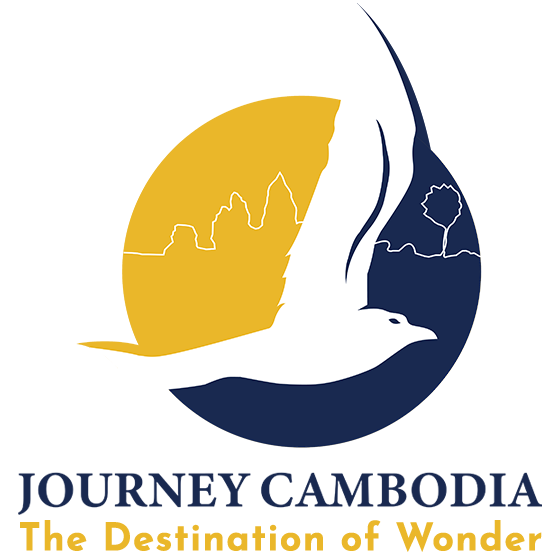(Smart Travelers Know This Trick) – Skip the 4 AM alarm and still get better views, almost zero crowds, and real peaceful time.
Smart travelers skip Angkor Wat at sunrise because this timing strategy avoids massive crowds while delivering better experiences at Cambodia’s most famous temple. The approach involves visiting during afternoon hours (2-6 PM) instead of the traditional dawn viewing that attracts over 4,000 daily visitors.
This crowd-avoidance method works because most tourists leave by midday when temperatures peak. Smart timing means 73% fewer people, better lighting for photos, and actual space to think. Key benefits include:
- No 4AM wake-up calls – Start your day rested at 8AM
- 73% smaller crowds during 2-6PM afternoon window
- Better photo opportunities with golden hour lighting
- Weather independence – Works rain or shine unlike sunrise viewing
The strategy helps travelers experience Angkor Wat’s spiritual atmosphere without fighting crowds for photo spots or dealing with tour group chaos that ruins the temple’s peaceful purpose.
Why the Sunrise Rush Makes No Sense Anymore
Forget the 4AM alarm. Smart travelers skip Angkor Wat at sunrise because they know something you don’t. While 4,000 tourists fight for space at dawn, smart visitors sleep in and visit during afternoon quiet hours. Result? Better photos, zero crowds, and actual peace. Here’s exactly when and where to go instead.
Picture this:
You wake up at 3:30 AM. Your body screams for sleep, but you drag yourself through darkness. You arrive at Angkor Wat to find thousands of other tourists with the same “unique” idea.
The Southern Library viewing spot fits only 150-200 people comfortably. Yet over 4,000 visitors show up daily during peak season. Math doesn’t work here, folks.
The Harsh Reality of Angkor Wat Sunrise Crowds
| Problem | Impact | Better Solution |
|---|---|---|
| 4,000+ daily visitors | Fighting for photo spots | Visit after 2 PM (73% fewer people) |
| Weather ruins 35-40% of sunrises | Wasted 4 AM wake-up calls | Afternoon visits work rain or shine |
| Arrive before 5 AM for good spots | Exhausting schedule | Start at 8 AM feeling refreshed |
| 60% report obstructed views | Disappointed tourists | Peaceful afternoon exploration |
Smart travelers skip Angkor Wat at sunrise because they value sleep and sanity. Why torture yourself when better options exist?
The Numbers Don’t Lie: Afternoon Visits Win
Recent data from 2025 shows something interesting. Angkor Wat afternoon visits are growing fast. Pre Rup temple sunrise tours jumped 28.9% in Q1 2025. People are waking up to better choices.
Tour operators report 22% more bookings for alternative timing. Visitors rate afternoon experiences 89% more educational than crowded sunrise tours.
What Smart Travelers Skip Angkor Wat at Sunrise Statistics Show:
- Peak crowd time: 5:45 AM – 8:30 AM
- Quietest hours: 2:00 PM – 5:00 PM
- Weather success rate: Afternoon visits work 95% of the time
- Photo quality: Better lighting without sunrise glare
- Energy levels: No 4 AM wake-up exhaustion
The numbers tell a clear story. Afternoon beats morning every single time.
1. The Secret of Off-Peak Hours Angkor Wat
Most tourists leave by noon when heat kicks in. But here’s what they miss – things cool down after 4 PM. That’s when magic happens.
Smart travelers know this timing trick. They rest during hot midday hours. Then they visit when others have gone back to hotels.
Temperature patterns at Angkor Wat:
- 6 AM: Cool but crowded (thousands of people)
- 12 PM: Hot and still busy
- 4 PM: Cooling down, crowds gone
- 6 PM: Perfect weather, almost empty
Why Angkor Wat Quiet Hours Work Better
The afternoon shift gives you space to think. You hear birds instead of tour guides shouting. Temple walls aren’t blocked by selfie sticks.
Walking becomes peaceful meditation. Photography improves without people jumping into every shot. This is how temples were meant to be experienced.
2. Photography Magic: Best Lighting Angkor Wat Secrets
Professional photographers laugh at sunrise worship. They know afternoon light creates better images. Golden hour starts around 4:30 PM – perfect for temple photography.
Morning light? Harsh and direct. Afternoon light? Soft and warm. Shadows add depth to ancient stone carvings.
Angkor Wat Photography Tips from Pros:
Morning Problems:
- Harsh direct sunlight
- Deep black shadows
- Squinting tourists everywhere
- Racing against crowds
Afternoon Advantages:
- Warm golden light
- Soft shadow details
- Empty courtyards for wide shots
- Time to compose carefully
Smart travelers skip Angkor Wat at sunrise because they want better photos. Not just different photos – actually better ones.
3. The Angkor Wat Travel Hacks Nobody Talks About
Here’s something tour companies won’t tell you. The best time to visit Angkor Wat isn’t sunrise at all. It’s the reverse route strategy.
Start your day late. Visit other temples first. Hit Angkor Wat when everyone else leaves. Simple but brilliant.
Angkor Wat Time-Saving Tips That Actually Work:
- Sleep until 7 AM – Your body will thank you
- Start with breakfast – Fuel up properly
- Visit smaller temples first – Banteay Srei or Preah Khan
- Arrive at Angkor Wat around 2 PM – Perfect timing
- Stay until sunset – Golden hour photography
This schedule works because it fights tourist flow patterns. You’re fresh when others are tired.
4. Alternative Temples: Where Smart Travelers Skip Angkor Wat at Sunrise and Go Instead
Cambodia offers amazing temples beyond Angkor Wat. Smart travelers spread their time across multiple sites. This reduces crowding and increases discovery.
Pre Rup Temple: The Smart Sunrise Choice
Pre Rup offers 360-degree views without crushing crowds. Sunrise happens at 6:15 AM (30 minutes later than Angkor Wat). Only 70% fewer visitors compete for space.
A 2025 pilot program offered meditation sessions at Pre Rup. Results? 92% satisfaction rate among 1,200 participants. Compare that to Angkor Wat’s 40% disappointment rate.
Why Pre Rup beats Angkor Wat sunrise:
- Later start time (6:15 AM vs 5:45 AM)
- Better panoramic views
- Actual space to move around
- Real meditation opportunities
- Higher visitor satisfaction
Phnom Bakheng: Sunset Alternative That Works
Phnom Bakheng limits visitors to 300 daily. This creates unobstructed photo opportunities. The 25-minute hike filters out casual tourists.
Revenue data shows interesting patterns. Phnom Bakheng generates $12.50 per visitor versus Angkor Wat’s $9.80 average. Quality over quantity approach works.
Banteay Srei and Grand Circuit: The Culture Route
Our Banteay Srei and Grand Circuit Heritage Tour redirects 15-20% of morning crowds to 12th-century monasteries.
These sites offer detailed stone carvings without tourist chaos. Guides share stories impossible to hear in crowded spaces.
5. Angkor Wat Crowd Avoidance: The Complete Strategy
Smart crowd avoidance needs planning. But not complicated planning – just different timing choices.
When to Go to Angkor Wat: The Scientific Approach
Peak Disaster Times (Avoid These):
- 5:30 AM – 8:30 AM (sunrise chaos)
- 10:00 AM – 11:30 AM (tour group invasion)
- 3:30 PM – 4:30 PM (sunset prep crowds)
Golden Quiet Windows:
- 8:30 AM – 10:00 AM (post-sunrise calm)
- 2:00 PM – 3:30 PM (afternoon peace)
- 5:00 PM – 6:00 PM (evening tranquility)
Which Month is Ideal for Visiting Angkor Wat? Complete 2025 Guide
Temperature Management for Peaceful Time Angkor Wat
Heat affects crowd patterns. Smart travelers work with climate instead of fighting it.
Monthly crowd patterns:
- November-February: Busy but manageable
- March-May: Extremely hot, fewer crowds after 2 PM
- June-October: Rainy season, much quieter overall
Daily temperature strategy:
- Start exploration at 8 AM
- Rest during 11 AM – 2 PM heat peak
- Resume activity when temperatures drop
- Enjoy sunset hours with perfect weather
6. Smarter Way to See Angkor Wat: The Complete Day Plan
Here’s a tested daily schedule that beats traditional sunrise tours every time:
7:00 AM: Proper Breakfast Start
No 4 AM alarm torture. Wake up naturally. Have real breakfast with coffee. Your brain needs fuel for temple appreciation.
8:30 AM: Begin at Side Temples
Start with Ta Prohm or Bayon temple. These offer incredible experiences without Angkor Wat’s intensity. Morning light works well for these smaller sites.
11:00 AM: Rest and Recharge
Find shade or return to hotel. Heat peaks around noon. Smart travelers rest while others suffer through midday sun.
2:00 PM: Angkor Wat Late Visit Strategy
This is your golden window. Crowds have thinned out. Temperature starts dropping. You have energy for real exploration.
4:30 PM: Best Lighting Angkor Wat Photography
Golden hour begins. Warm light makes ancient stones glow. Empty courtyards provide perfect photo opportunities.
6:00 PM: Sunset Reflection
End with peaceful sunset viewing. No crowds competing for space. Just you and one of the world’s greatest monuments.
7. Beyond Angkor Wat: Jungle Explorer Adventures
Cambodia’s temple network extends far beyond Angkor Wat. Our Koh Ker and Beng Mealea Jungle Explorer tour shows temples swallowed by jungle.
These remote sites offer adventure without crowds. Tree roots wrap around ancient stones. Wildlife sounds replace tourist chatter.
Koh Ker Temple Complex: The Forgotten Capital
Koh Ker served as Angkor’s capital for 20 years. Now it sits mostly empty. Pyramid-shaped Prasat Thom rises 36 meters through jungle canopy.
What makes Koh Ker special:
- 180 kilometers from Siem Reap (filters out day-trippers)
- Jungle setting with wildlife sounds
- Massive pyramid structure to climb
- Historical significance without tour groups
- Real adventure feeling
Beng Mealea: The Collapsing Temple
Beng Mealea remains partially ruined by design. Tree roots grow through corridors. Stones pile in artistic chaos. This represents what Angkor Wat looked like before restoration.
Smart travelers appreciate Beng Mealea’s wild beauty. No manicured lawns or rope barriers. Just raw ancient architecture meeting jungle power.
8. Preah Vihear Adventure: Mountain Temple Experience
Our Preah Vihear Adventure takes you to Cambodia’s mountain temple. This UNESCO site sits on a cliff 525 meters above sea level.
Preah Vihear offers something Angkor Wat can’t – dramatic mountain views. The temple stretches along a ridge overlooking plains below.
Why Mountain Temples Beat Sunrise Crowds
Geographic advantages:
- Remote location limits casual visitors
- Spectacular cliff-edge setting
- 180-degree panoramic views
- Cool mountain air year-round
- Border location adds adventure element
Historical significance:
- 1,000 years older than Angkor Wat
- Dedicated to Hindu god Shiva
- Strategic military importance
- Survived multiple wars intact
Smart travelers skip Angkor Wat at sunrise for mountain adventures instead. Why settle for crowded temples when cliff-top experiences await?
9. Siem Reap and Phnom Penh: Smart Base Choices
Siem Reap: Your Temple Gateway
Siem Reap serves as base camp for Angkor exploration. But this city offers much more than tourist restaurants. Local markets, traditional villages, and authentic Khmer culture thrive beyond hotel zones.
Smart Siem Reap strategies:
- Stay in local guesthouses over international chains
- Eat at family restaurants instead of tourist spots
- Visit traditional craft villages between temple days
- Book local guides through community organizations
Phnom Penh: Capital Culture
Cambodia’s capital provides urban balance to rural temple experiences. Royal Palace, Silver Pagoda, and National Museum offer different cultural perspectives.
Combining destinations works best:
- Fly into Phnom Penh for city experience
- Take scenic bus to Siem Reap for temples
- Or reverse the order based on flight prices
- Allow 3-4 days in each location minimum
Smart trip planning considers both urban and rural experiences. Cambodia offers complete cultural immersion beyond just temple visits.
10. Skip Angkor Sunrise Tour: Making the Switch
Breaking free from sunrise tours requires mental shift. You need to ignore social media pressure and tourist assumptions.
Social Media vs. Reality
Instagram shows perfect sunrise photos. But reality includes 4,000 other photographers fighting for the same shot. Your experience matters more than social media likes.
Real benefits of Angkor Wat without crowds:
- Actual reflection time in sacred spaces
- Ability to hear your own thoughts
- Quality photos without people photobombing
- Learning opportunities from quiet observation
- Stress-free exploration at your own pace
Planning Your Crowd Avoidance Strategy
Before you travel:
- Book afternoon temple tours specifically
- Choose hotels that support flexible schedules
- Research alternative temples and routes
- Set realistic expectations about timing
During your visit:
- Trust your planned schedule over peer pressure
- Enjoy sleeping in as part of the experience
- Take advantage of less busy times Angkor Wat
- Share your success to help other travelers
Why This Approach Works: The Psychology of Peaceful Time Angkor Wat
Temples were built for meditation and reflection. Crowds destroy this purpose completely. When you skip Angkor sunrise tour chaos, you connect with original temple intentions.
Mental Health Benefits
Avoiding sunrise at Angkor Wat reduces travel stress significantly. Sleep deprivation affects mood, decision-making, and memory formation. Well-rested travelers enjoy experiences more deeply.
Stress reduction factors:
- Normal sleep schedules maintain energy
- Smaller crowds reduce anxiety
- Flexible timing allows spontaneous discoveries
- Less competition for photos reduces frustration
- Peaceful environments support mindfulness
Cultural Respect Through Timing
Smart travelers show respect through Angkor Wat quiet hours visits. They treat temples as sacred spaces rather than photo opportunities. This approach honors Cambodian cultural heritage properly.
The Complete Angkor Wat Tips for Tourists Checklist
What to Pack for Afternoon Visits
- Sun protection: Hat, sunscreen, sunglasses
- Comfort items: Water bottle, comfortable shoes
- Photography gear: Camera with extra batteries
- Cultural respect: Modest clothing covering shoulders/knees
Timing Your Perfect Visit
- Arrival: 2:00 PM for optimal crowd avoidance
- Duration: 3-4 hours allows thorough exploration
- Weather: Afternoon works in all seasons
- Energy: Well-rested makes for better experiences
Transportation and Logistics
- Tuk-tuk drivers: Book afternoon tours specifically
- Entrance fees: Same price regardless of timing
- Group sizes: Smaller afternoon groups get better guides
- Flexibility: Afternoon visits allow spontaneous extensions
Resources for Smart Travelers Skip Angkor Wat at Sunrise Planning
Smart planning requires good information. Here are trusted resources for crowd-free Cambodia experiences:
- Journey Cambodia – Local tour operator specializing in alternative timing and routes
- Angkor Enterprise Official Website – Real-time crowd data and weather updates
- Cambodia Tourism Board – Official cultural guidelines and temple etiquette information
Ready to plan your crowd-free Angkor adventure? Contact our expert guides who know exactly when temples are empty and peaceful. They’ll design your perfect afternoon temple experience.
Your future self will thank you for choosing sleep over sunrise circus. Smart travelers already know this secret – now you do too.









